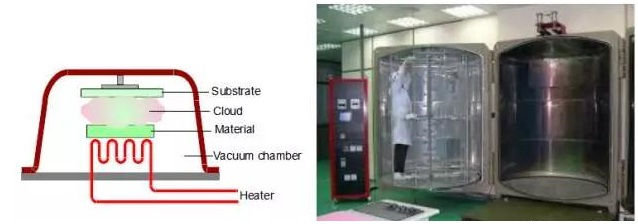Make crystals with LEC method
- gwj0606
- Oct 6, 2023
- 4 min read
Updated: Oct 31, 2023
Introduction
The LEC (Liquid Encapsulated Czochralski) method is a widely used technique in the manufacturing of high-quality single crystals. This method involves the growth of crystals from a molten solution that is encapsulated by a crucible made of suitable materials. The crystals grown using this technique are used in various applications, such as semiconductor devices, optoelectronics, and high-temperature superconductors.
In this article, we will discuss the LEC method in detail, including its principle, advantages, and disadvantages. Additionally, we will also provide some examples of crystals that have been grown using this method, particularly those utilizing PBN (Pyrolytic Boron Nitride) crucibles.

The Principle of LEC Method
The LEC method involves the melting of a material in a special crucible (usually made of boron nitride or platinum). The crystal growth happens from the bottom of the melt under controlled temperature, pressure, and atmosphere. During the process, the seed crystal is dipped into the melt and then pulled out at a controlled rate. The melted part of the crystal gradually solidifies as it moves away from the melt, leaving behind a pure crystal at the end of the process.
One of the unique features of the LEC process is the use of an encapsulant material (such as boron nitride) to contain and protect the crystal's seed during growth. This allows for the growth of highly pure crystals without contamination from the crucible material, which is especially important when producing semiconductors or electronic components.

PBN Crucibles
PBN (Pyrolytic Boron Nitride) crucibles are essential components in crystal growth processes, particularly in the production of high-quality single crystals. These crucibles are made using a unique manufacturing technique called chemical vapor deposition (CVD) on a graphite substrate. During the CVD process, boron and nitrogen precursors are introduced into a high-temperature reactor chamber. Under controlled conditions, the precursors decompose and react to form boron nitride vapor. The vapor then condenses and deposits as a thin layer onto the graphite substrate, gradually building up the PBN material. The resulting PBN crucibles possess excellent thermal and chemical stability, as well as high purity. Their unique layered structure, resembling graphite, provides favorable properties for crystal growth. The layered structure allows the crystal grains grown on the crucible to align along the surface direction, ensuring high-quality crystal growth. However, it's important to note that the wall thickness of PBN crucibles cannot be too thick (<2mm). This is because the materials grown through the CVD process tend to follow the direction of the crucible's surface and form laminated structure and so does PBN. If the crucible gets too thick, it can accumulate excessive stress, leading to cracking and compromising its usability.
PBN crucibles find extensive applications in various crystal growth techniques, such as the growth of silicon, gallium nitride, and other semiconductor crystals. They provide an inert and high-temperature environment for the crystals to grow, ensuring purity and minimizing contamination. The excellent thermal conductivity of PBN crucibles allows for efficient heat transfer, enabling precise control over the crystal growth process. In addition to semiconductor applications, PBN crucibles are also used in the production of other advanced materials, including superconductors, high-temperature ceramics, and optical crystals. Their unique properties make them an ideal choice for demanding crystal growth processes that require high purity and precise control over the growth conditions.

Advantages of LEC Method
The Liquid Encapsulated Czochralski (LEC) method for crystal growth has multiple benefits compared to other techniques. As noted previously, LEC enables incredibly pure crystals to be produced. The use of an encapsulant like boron nitride also shields the seed crystal from impurities or harm during the growth process.
Another plus is the outstanding crystal quality attained through LEC. This method yields a crystal with a flawless surface absent of fractures, striations, or other flaws. Thus, crystals expanded utilizing LEC can be utilized in applications necessitating high-grade surfaces, like lenses or mirrors.
Disadvantages of LEC Method
Despite its many advantages, there are some drawbacks to using the LEC method, particularly regarding the crucible material and the cost. Boron nitride crucibles are preferred for growing certain types of materials because of their non-reactivity. However, the size of crucibles are limited. Boron nitride crucibles are produced by either hot pressing technique, or CVD process. For hot pressed boron nitride, the recorded largest BN crucible diameter is 16” diameter (reported by QS Advanced Materials), while the size for PBN is limited to about 200mm.
Examples of LEC method
One example of the LEC method in action is the production of gallium arsenide (GaAs) crystals for use in electronic devices such as solar cells and semiconductors. GaAs crystals grown using the LEC method have excellent structural and electrical properties, making them ideal for use in high-performance electronic applications.
Another example is the production of sapphire crystals that are used in LED manufacturing. Sapphire crystals grown using the LEC method offer exceptional optical clarity and hardness, which makes them an ideal material for producing robust and long-lasting LED lights.
One crucial element in the LEC method is the use of a PBN crucible, or a pyrolytic boron nitride crucible. The PBN crucible acts as a container for the molten material and also helps to shield the crystal from impurities during the growth process. Due to its unique thermal insulation properties, the PBN crucible can withstand high temperatures and maintain a stable temperature environment during crystal growth.
Summary
The LEC method is an effective way to produce high-quality single crystals for a range of applications. Its ability to produce crystals with exceptional structural and electrical properties has made it a crucial manufacturing technique across various industries. Furthermore, the use of PBN crucibles adds value to the LEC method by enhancing the quality of the final product.







Comments